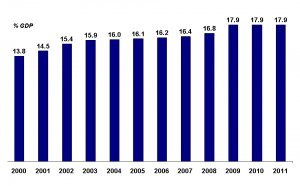
French Health Care System
France is known for the quality and generosity of their medical care, which got top ranking from the World wellness business in 2000. General public medical insurance addresses the entire population and all costs for really serious or persistent health problems; patients can decide their particular doctor and hospital; and medical practioners can decide the treatment ideal for their patients, including very expensive treatments. The device favors curative input, as recently illustrated by a political choice offering financing free of charge supply of sofosbuvir to patients with hepatitis C. Prevention campaigns take into account just 2.3per cent of present wellness expenditures. Two units of ethics regulate the machine: the French conception of public service, predicated on equal treatment plan for all, and also the ethics of the health occupation, which support health practitioners’ freedom from general public authorities and exclusive commitment to their clients’ passions and needs. These values have led to extensive use of healthcare therefore high expenses (see and case records; to compare this country with others, start to see the interactive graphic).
Healthcare digests a sizable proportion associated with country’s gross domestic item in accordance with that far away into the Organization for financial Cooperation and developing, but in regards to per capita health expenditures, France ranks somewhat reduced. The real difference reflects the weakness regarding the economic climate. Tall unemployment features caused a chronic deficit within the community medical health insurance fund, which hinges on work-related contributions and taxes. Community hospitals have built up considerable financial obligation, having made big assets in improvements required because of the federal government but just partially covered by public funding. Hospitals had been promoted to take out loans from banks that they’re now struggling to repay because their particular reimbursement rates happen decreased so that you can limit medical health insurance expenditures. Finding a way using this financial pitfall would require a better-performing economic climate or structural changes in the way in which health care funds tend to be raised and distributed — changes that no federal government has dared to produce. The French public defends the device, which they perceive as general public despite its considerable private measurements.
This public–private mix creates complexity. Attention is provided by public hospitals, private not-for-profit hospitals, and commercial hospitals, and a big ambulatory care sector made up of independent professionals, of who 53per cent are basic practitioners (GPs) and 47percent professionals. There's two distinct policy domains: the us government establishes payment rates for medical center treatment, whereas separate physicians bargain collective agreements using medical health insurance investment. Medical insurance does not, however, cover the full level of care expenses, except in instances such attention during pregnancy, for specified really serious or chronic conditions, as well as bad clients who are enrolled free. Normally, insurance coverage covers two-thirds of expenses, though only a nominal quantity for devices particularly eyeglasses and hearing aids. We (96percent), for that reason, also donate to a private complementary health insurance plan. Insurance is therefore a two-tiered system, with a statutory portion and a complementary personal one.
France’s institutional patchwork tends to make coordinating care difficult. Independent practitioners, paid on a fee-for-service foundation, have little incentive to take part in coordination, information sharing, and the like. They have been nonetheless compensated straight by clients, who will be later on reimbursed by insurance coverage. A law passed in December 2015 will need doctors to just accept third-party repayment, but this law is opposed by many physicians — specifically exclusive professionals, lots of whom have entitlement to charge a lot more than the state insurance costs. Moreover, separate physicians can create practices wherever they desire, without any obligations with regards to geographical circulation, opening hours, or population wellness. Partial reimbursement, the requirement for up-front repayment, and unequal distribution of ambulatory treatment would be the primary obstacles to equal access. Community hospitals are the universal entry way, both for poor communities that use emergency solutions in order to avoid the economic limitations for the ambulatory treatment sector and very specific consultations, which don’t require recommendations when offered in public places hospitals. Local hospitals, accessible in exact same problems as other public hospitals, use France’s top doctors.
Share this Post
Related posts
United Regional Health Care System
Just before entering the work search, you need to review and take these United Regional Pledge of Excellence. When you review…
Read MoreUS Health Care System Explained
This brief movie is an essential guide for just about any international students seeking to study or visit america. With…
Read More
















